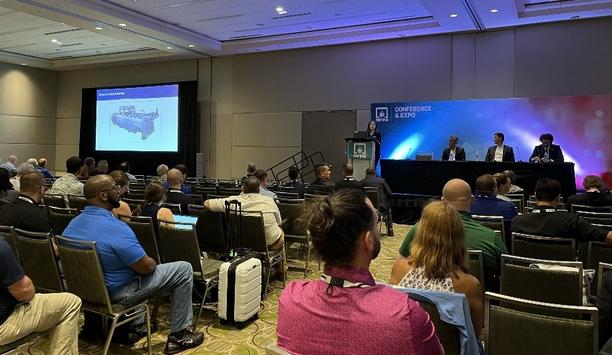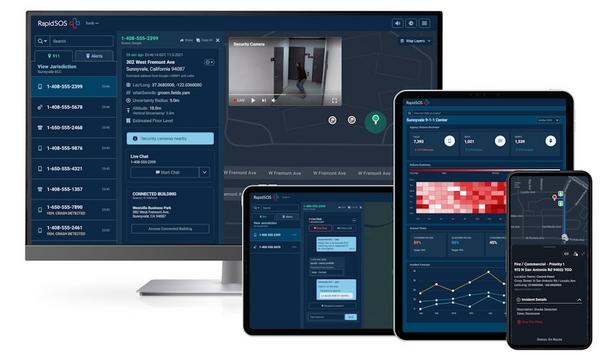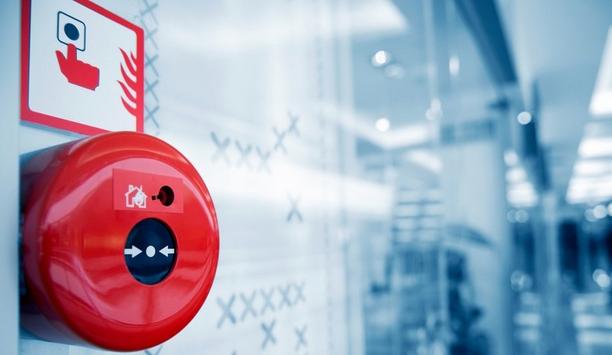Hundreds of sensors and devices operating across an entire city – all connected via the Internet of Things (IoT) – combine to provide useful and actionable information for a variety of functions – including public safety and fire protection. Even as IoT sensors and devices monitor buildings to provide vital information, computer systems transform sensor data into intelligence. Communication advances are ensuring that intelligence is shared when and how it is needed.
The National Fire Protection Association (NFPA) divides smart firefighting technology into three categories – environmental (smart buildings or robotics), operational (communications), and personnel (PPE sensors or biometrics). Fire departments in smart cities can fuse and apply data captured from various smart sensors, computing technologies, building control systems, municipal grids, firefighting equipment, mapping information, and apparatus systems to inform budgeting, planning, operations, tactics, and outreach, says NFPA.
Here are some ways that smart cities can provide information and insights to enhance fire safety and protection for residents.
Perpetual monitoring of building conditions, including temperature sensors, to alert to possible fire dangers
Intelligent building platforms can use artificial intelligence algorithms to analyze building systemsIntelligent building platforms can use artificial intelligence (AI) algorithms to analyze building systems, track fire inspections, gather pre-incident data, etc. Smart building intelligence (SBI) platforms can also share and analyze municipal data records for new construction project permits, fire hydrant malfunction, street closures, and event planning, among other information.
Faster notification of fire events, which contributes to faster response
IoT devices that monitor buildings in smart cities can detect fires more quickly, compared to traditional smoke detectors. Heat-proof sensors communicate where and when a fire starts, its intensity, nature, and patterns of spread.
Providing more information to enable firefighters to be more effective
Improved information flow enhances the capabilities of incident command centers, expands computer-aided dispatch, and provides better situational awareness for firefighters working on the scene. Knowledge of what’s happening on the ground enables streamlined approaches to firefighting and evacuation, enabling “Know Before You Go” smart firefighting.
Routing traffic to clear the way for fire and emergency personnel
Correlating response plan information with intelligent traffic management systems and collision avoidance technology can help prevent accidents involving emergency and civilian vehicles. For example, all civilian vehicles in a given area may be rerouted to avoid traffic mishaps.
Protection and monitoring of fire personnel, including in dangerous environments
Integration with personal safety devices and fire suit technology enables tracking of firefighters to provide incident commanders better visibility into where individual firefighters are working to battle a blaze. Radio-frequency identification tracks firefighters’ locations in real-time. Acoustic transmitters provide locations of firefighters who have not moved for a predetermined period of time. Sensors may soon provide additional information, such as oxygen and carbon dioxide pressure, volume flow rate, heart rate, gas pressure, body temperature, etc.
Smarter fire prevention equipment, such as smart sprinklers, that can facilitate fire response
Sensors interface with a sprinkler device and wirelessly transmit status information to a database used by facility managers and inspectors to identify problems. Sensors even enable sprinklers to spray high-pressure mist into flames at the hottest point in a room. Measuring the volume of water that has been flowing through a sprinkler system reflects real-time progress in fighting a fire and informs when and how to send in fire personnel.
Automating fire response, including use of drones
A drone could be launched as soon as an incident response is dispatched, and then fly to an incident site to provide real-time situational awareness via video streaming from the sky.
Communicating vital intelligence to firefighters, when & how they need it
Fire safety and protection is just one aspect of the many uses that can benefit from the connectivity and intelligence of smart citiesInnovations in technology such as Next Generation 911 and the First Responder Network Authority (FirstNet) public safety network ensure effective communication among firefighters. Low-power Wide Area Networks (WANs) and wireless networks transmit a wide range of data to firefighters as needed, using mobile data terminals, tablets, smartphones, or computers.
Systems provide more data-rich information in real-time, such as closed-caption video streams or data from IoT devices. Public safety answering points (PSAPs) provide access to cloud-based computer-aided design (CAD) platforms, advanced location information, and data from devices such as phones, wearables, connected cars and homes, and transportation apps.
Fire safety and protection is just one aspect of the many uses that can benefit from the connectivity and intelligence of smart cities, although its impact on saving lives is among the most profound.







































